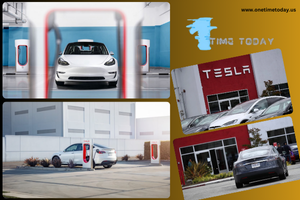Tesla’s revolution of increased usage of electric cars has caught the automotive industry off guard. The combination of new technology, beautiful appearance, and state-of-the-art features have made Tesla the darling of customers worldwide. But for all the progress Tesla has made, the firm is now up against one major problem: numerous cars are experiencing wide-scale computer issues that continue to put users and specialists in a vulnerable position. While these problems continue, one has an impression that there is no solution for what ails the automotive giant. First and foremost, this article provides an overview of the development of the problem, analyses possible reasons, and describes possible effects for both the company and the customers.
Understanding the Problem
A noticeable number of Tesla owners have, within the last few months, experienced major computer failure that manifests in a host of problems such as the car’s screen freezing, unresponsiveness, to complete freezing of the car computer. Some owners have been unable to get essential controls of their autos such as navigation, music, or even the simple stuff. Most of these complaints are focuses on the Model 3 and Model S vehicles which have an in-car computing system capable of powering many new features.
An Overview of Tesla’s Computing Systems
Embedded at the heart of the problem is the vehicle computing method that Tesla uses for all of their automobiles. In lieu of the generic in-car entertainment system, Tesla cars use infotainment and driving control computer that is built into the car. This proprietary system is called the “vehicle computer” and it’s responsible for managing and controlling virtually anything in or on the automobile, from the climate control to the automobile pilot. However, this approach has its own issues; the participant is now required to understand software processes and system integration.
Determining the Probable Cause
No one appears to be too sure of what could be causing the myriad of computer crashes; this leaves the experts with no clear solution to the problem. Some have blamed this on Tesla which boasts of frequently providing software updates to its cars’ main computer via the internet: frequent updates could be increasing the pace at which software glitches, bugs and inconsistencies are pushed through to the cars. Third, there are questions about the durability of the equipment installed in Tesla cars because the company sources most of its components from third parties.
The Effect of the Incident on Tesla’s Image
There are more and more complains regarding car computers to fail, which has negatively impacted Tesla’s reputation as customers do not receive enough help and possible solutions for their problems. This has given rise to negative word-of-mouth communications, social media complaints and, reduced consumer patronage. Consequences are not limited to the individual owners, the general problems mentioned could also impact potential buyers, this is a clear blow to Tesla strictly in terms of sales and market share.
The Search for a Solution
In response to the increased problem, Tesla has already made some of the changes to help combat the issue, which are developing software updates that are said to increase the system stability and performance. However, such efforts have yielded somewhat of a success, except that some of the owners use the updates to diagnose their vessels and end up getting new complaints after applying the updates. While the problem persists, Tesla has become a target of regulators, investors, and consumers as it looks for a more enduring solution.
Conclusion
While production line defects are a never-ending headache for several car makers across the world, Tesla is left with a long task of regaining its customer trust while dealing with recurring computer failures across its vehicles. As of now, the future for Tesla strings with no apparent solution, Tesla has to tactfully map out strategies to resolve the issues of high fluctuating software quality, inconsistent reliability of the components used in their cars, and the weak support system it currently possesses. Altogether, it means that further destiny of this troubled automotive giant will depend on its capacity to learn new lessons and make necessary changes in the light of challenges which seem to jeopardize its further development in the context of the emergent electric car industry. The real question remains as to whether or not Tesla is capable of emerging from this experience stronger then they were before.



